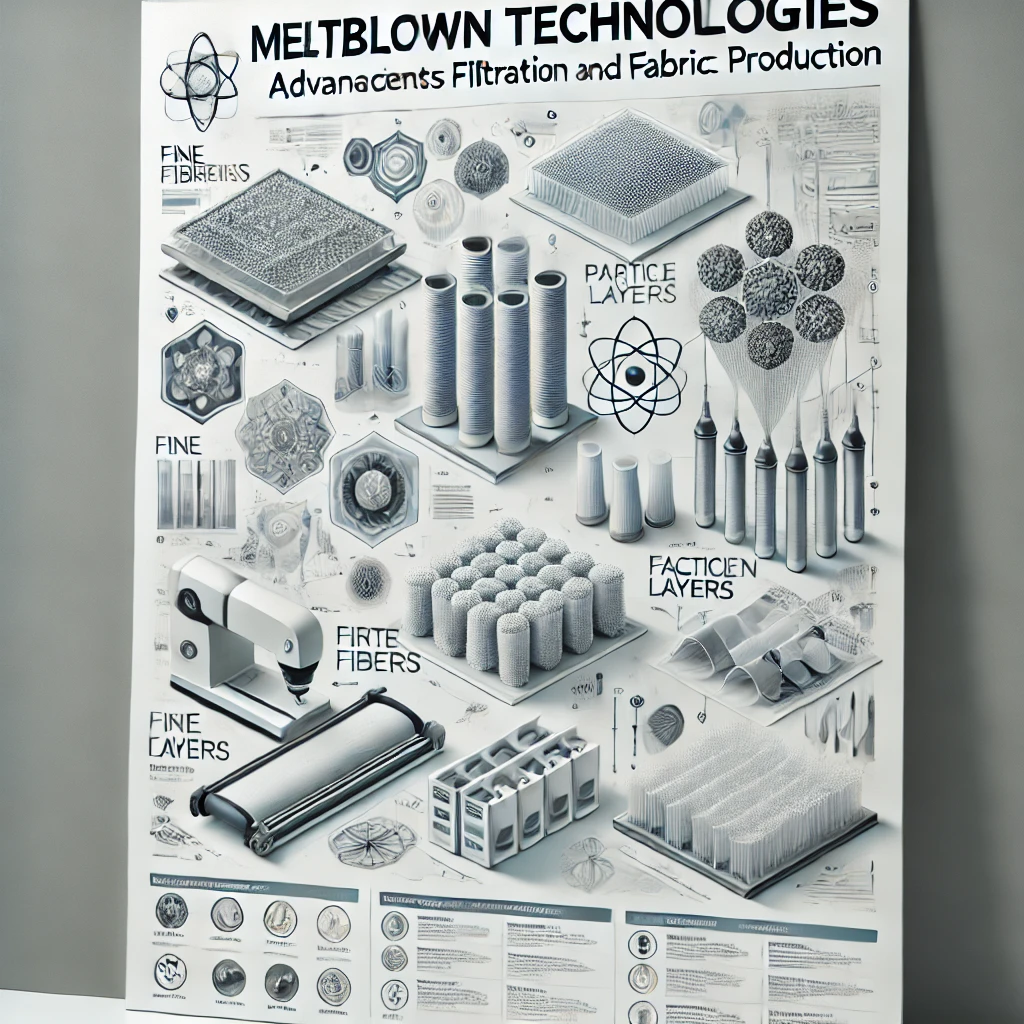Meltblown technologies have become essential in the production of high-quality, nonwoven fabrics. These fabrics are widely used in various industries, especially in filtration, medical products, and personal protective equipment. The meltblown process creates fabrics with fine fibers that provide exceptional filtering capabilities. In this article, we’ll explore what meltblown technology is, its applications, and why it is so vital in today’s industrial landscape.
Table of Contents
Understanding Meltblown Technology
Meltblown technology is a process used to produce nonwoven fabrics by extruding melted polymer materials through tiny nozzles. The polymer strands are blown by high-speed hot air, creating ultra-fine fibers that bond as they cool. This process results in a soft, breathable, and highly effective filtering material.
Core Applications of Meltblown Fabrics
Meltblown fabrics are renowned for their filtering capabilities, making them ideal for various industries.
1. Filtration Products
Filtration is one of the most important applications for meltblown fabrics. These fabrics’ ultra-fine fibers and dense structure make them perfect for trapping particles and pollutants.
Air Filtration
In air filtration, meltblown fabrics are used in air purifiers, HVAC systems, and masks. Their dense structure captures particles like dust, allergens, and pathogens, improving indoor air quality and promoting healthier environments.
Liquid Filtration
Meltblown fabrics are also widely used in liquid filtration, particularly in industries where clean water or fluids are essential. They are found in water treatment systems, oil filters, and other industrial applications where precise filtration is crucial.
2. Medical and Healthcare Products
The medical field has become one of the largest users of meltblown fabrics due to their filtration efficiency and breathability.
Surgical Masks and Respirators
Meltblown fabrics are key components in surgical masks and N95 respirators. The material provides the barrier needed to filter out airborne particles, bacteria, and viruses, helping to protect both healthcare workers and patients from infections.
Medical Gowns and Drapes
Meltblown fabrics are also used in protective gowns and surgical drapes, where their lightweight structure and breathability offer comfort while protecting against contaminants.
3. Personal Protective Equipment (PPE)
Meltblown fabrics are crucial in the production of various forms of PPE, especially since the COVID-19 pandemic highlighted the need for high-quality protective materials.
Face Masks
Face masks made with meltblown fabrics provide reliable protection due to their ability to filter out small particles effectively. They are used by both healthcare professionals and the general public for their protective qualities.
Protective Suits
Protective suits made from meltblown fabrics offer a lightweight, flexible solution that can shield wearers from hazardous particles, making them suitable for industries such as construction, manufacturing, and healthcare.
Advantages of Meltblown Fabrics
1. High Filtration Efficiency
The ultra-fine fibers produced by meltblown technology make these fabrics highly efficient in trapping particles. This makes them ideal for use in air and liquid filtration as well as protective equipment.
2. Lightweight and Breathable
Despite their density, meltblown fabrics are lightweight and breathable, providing comfort while maintaining effectiveness. This is particularly valuable in medical and PPE applications, where comfort is crucial.
3. Versatility Across Industries
Meltblown fabrics are adaptable to a wide range of applications, from filters to PPE. Their versatility has made them essential in many fields, especially in situations requiring both durability and filtering capability.
How Meltblown Technology Has Shaped Industry Standards
Meltblown technology has set a new standard in filtration and protective materials, as the demand for effective filtering solutions continues to grow. Industries now prioritize meltblown fabrics due to their reliable performance and adaptability. Additionally, advances in the meltblown process allow for greater control over fiber size and density, further enhancing product quality.
Environmental Impact and Innovations
Biodegradable and Sustainable Options
As environmental awareness increases, researchers are developing biodegradable meltblown fabrics using natural or recycled materials. These innovations are helping to reduce the environmental impact of single-use items like masks and filters.
Improved Manufacturing Processes
Advances in manufacturing technology have made the meltblown process more efficient, reducing energy consumption and waste. This progress not only cuts production costs but also minimizes the environmental footprint.
Conclusion
Meltblown technology has transformed filtration and protective equipment by creating fabrics with fine fibers that offer superior filtering capabilities. Used in everything from medical masks to industrial filters, these materials have become indispensable in modern industry. As innovations continue, meltblown fabrics will only grow more adaptable and sustainable, ensuring that they
